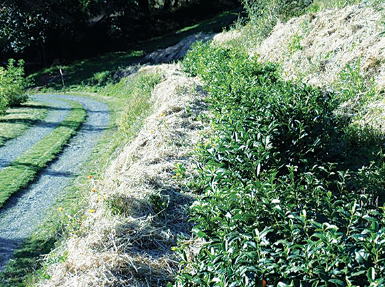Can the USA be a true tea-growing country?

Small tea garden in the United States
Tea enthusiasts, can you ever imagine walking into your favourite tea shop and purchasing a “Single Origin Tea from Oregon” or a “Single Estate Tea from California?” At one time, this may have been an utterly nonsensical thought, but apparently, a viable tea-growing industry in the United States is in fact possible.
The Specialty Tea Institute’s latest Tea Talk (in conjunction with the Tea Association of the USA) featured Angela McDonald, president of the United States League of Tea Growers, and founder of Oregon Tea Traders, who discussed the potential of having a viable tea-growing industry in the US.
Although certainly not a new crop, tea is a relatively new addition to US agriculture. McDonald noted that tea-growing in the US has been tried before but many of those attempts were abandoned. T&CTJ first covered the topic of tea growing in North America in a cover story in our May 2014 issue, where we discussed Bigelow’s tea plantation in South Carolina, tea farms in Hawaii, and smaller start up tea projects in California and Canada. Bigelow still maintains its tea plantation, which is the largest working tea farm in the US, and Hawaii has an active tea industry, but do the other tea gardens we spotlighted still exist or did they cease their efforts? I am honestly not sure, but McDonald said tea can be a viable crop in the US.
“It is a difficult crop to establish because it can take 5 to 8 years [before plants become productive] and there is a lot of potential for problems during that time. It is also a very regional crop — what works in one region of the US may not work in another,” said McDonald, “but it is possible and reasonable to do, and it is viable.”
All tea consumed in the US is grown in other countries, “but tea-producing countries have a lot of problems such as a lack of labour (younger workers moving to urban areas), sustainability issues, and Covid-19 has brought many tea industry issues to the forefront,” she said, adding that the ‘locavore’ mentality has also been highlighted during the pandemic as consumers want to know more about their food and where it is grown.
McDonald explained that with smaller footprints there is the opportunity to have fresher tea as it is not be shipped as far, thus a short time from picking to processing to the shelf [which also reduces the carbon footprint]. “The US is a huge country with a lot of microclimates so flavour profiles can be created for single origins such as ‘Oregon Tea’ or ‘North Carolina Tea,’ etc,” said McDonald. “This would secure a domestic supply of tea and there are export possibilities, so tea becomes economically viable as [the industry develops a] customer base from around the world.” She also noted that there is an opportunity for agro-tourism, which can further help develop the domestic tea industry.
“Tea grows fine here,” said McDonald. “The easiest places to grow are in Hawaii, the southern states, coastal areas [California, North and South Carolina], and some Midwest regions, but it is harder once you head north.”
I am intrigued by the concept of a US tea-growing industry (If cigarette sales continue to decline, could tobacco farmers turn to tea?) but am curious about the economic viability given how labour intensive tea-picking is coupled with the strict labour laws in the US.
“Tea is way too labour intensive but there are a lot of changes going on in terms of harvesting and processing machinery that are making the industry more feasible,” said McDonald. “So, it’s not necessarily [viable] now, but in 5 to 10 years – it’s a long-term crop – it’s possible. We need to focus on production and labour…But it’s really a great time, a great opportunity to grow tea here as there is a demand for it — those who do sell it are selling out each year even though it is pricey.”
McDonald pointed out that there are a lot of different ways to help reduce labour costs, such as mechanisation. “Mechanised [harvesting and processing] is important. Harvesters save labour time and costs as do [processing equipment such as] rolling machines. They cost a few thousand dollars but it’s doable.”
The US League of Growers is trying to help farmers to develop the domestic tea industry. McDonald said that machinery is coming along in terms of quality and size as there is machinery for small farms, so it is more affordable. “We are advocating to have consultants visit small farms and we are encouraging farmers to grow and invest in machinery [harvesting, processing] together [akin to a cooperative] so there is one centralized processing facility that is shared,” she explained. “[Tea-growing in the US can be a viable industry], but it has to be done right and scale is a big thing. Doing it together by sharing machinery and expertise is really the most [practical] way for small growers (those with 1 or 2 acres).”
So, it may not be too long before we see “grown in the USA” tea popping up on store shelves domestically, and even internationally…
- Vanessa L Facenda, editor, Tea & Coffee Trade Journal.
Keep in touch via email: [email protected]
Twitter: @TCTradeJournal or LinkedIn: Tea & Coffee Trade Journal.



